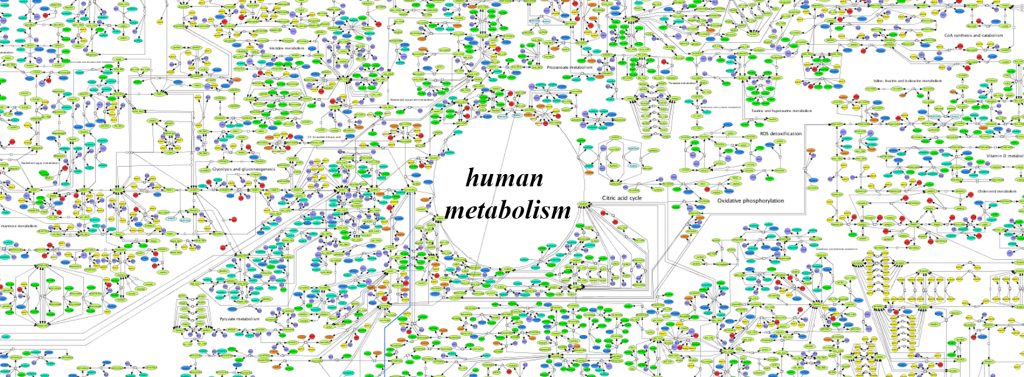Before we can plan for a long life, we must first examine what governs living. We all know that the heart beats, that we breathe, that we eat, sleep, think and move. But what actually governs this miraculous process?
The engine of life is our metabolism. Simply put, metabolism is the bio-chemical transformation of food, water and oxygen into energy and tissue. It is the process by which our rate of breathing and heart rate is managed, in order to balance energy stores to energy use. Metabolism speeds up when we are stressed, for example, running, starving or cold. It also speeds up when we have a fever, or when we need to repair damage. At other times, for example, when we are at rest, the body engages a lower gear, slowing down the metabolism, conserving energy.
But beware the mechanical similes. Life is not like General Motors. People don’t wear out like old cars. Though some groups of cells sometimes do stop working, even if the rest of the body is sound.
I think that over-used, yet false analogy, between the body and an engine is where a lot of the misunderstandings occur. The body is made up of parts, like an engine, but these parts all contribute to life. It might be better to think of the body like a city, where each individual element, the people, the buildings and the systems are all interlinked, but are also, to a certain extent independent.
The cellular structure of a living organism, is quite unlike the structure of a machine. All of the 30,000,000,000,000 (30 trillion) cells in the average human body have to be able to absorb nutrients, glucose, amino-acids, vitamins and hundreds of other bio-catalytic elements including water and oxygen in order to make energy. The energy the cell makes powers all bodily functions, the reproduction of new cells and the repair or disposal of delinquent cells. Many of the substances absorbed into the cell are re-engineered within it and then transported to other parts of the body, where they fulfil a myriad of functions. Specialist cells produce hormones, such as insulin and adrenalin, they manufacture antibodies and clear away infections. Groups of cells within the digestive tract absorb essential amino acids (the building blocks of protein) and direct them to our muscles and organs where they go to strengthen muscles such as our abs and pecs. But also, these same proteins go to maintain the most important muscle of all – the heart.
When a bright light flashes, we automatically close our eyes. This cannot occur unless electrical impulses have been directed from special light sensitive cells in the retina, along nerve cells to the brain, triggering memory and autonomic reactions that message the muscle in the eyelid to contract. The whole system consists of thousands of individual cells, each fulfilling a specialist function, all of which are fueled with energy, repaired, fed and watered every day in order that we can blink.
Unlike a vehicle there are no ‘parts’ in the human body that are inert. A car body is simply a wrapping, its upholstery filled with inert stuffing. But in a human body even the skin is growing and changing all the time. Our skin absorbs energy from the sun and converts it into vitamin D and skin excretes toxins in our sweat. If we cut ourselves, the skin will immediately be re-joined by a flood of stem cells that repair the damage and eventually transform themselves into fully fledged new skin. Even fat cells, that we once thought of as excess baggage, we now know are important modifiers of the immune system, as well as our principal energy stores. Because there are millions of different types of cells, metabolism is a hugely complex branch of bio-chemistry that is hardly explained in medical training, or practice. Even in my postgraduate nutrition teaching, metabolism was reduced to a few hundred really important functions. If we needed to know more, we had to look it up.
How metabolism effects longevity
It is not surprising that one of the really important secrets of longevity, how metabolism works, is subject to myths and misinformation. Metabolism is misunderstood. One very common myth is based on some research that was done on fruit flies several years ago. If you starve fruit flies, they live longer. Some people have extrapolated that research to deduce that the secret of longevity is to slow down human metabolism, by starving yourself. Obesity does decrease the chances of living a long and healthy life, but fasting, or continual dietary restriction has not been shown to be effective. What is perhaps more important than dietary restriction is to ensure that your metabolism can switch between feast and famine – action and rest – something it should do naturally and with facility every day of the week[i].
As with so many of the longevity myths, the needle of truth that founds them is subsumed by the haystack of rubbish that keeps them afloat. This next sentence is in caps because I mean to shout if from the rooftops!
STARVING YOURSELF WONT HELP YOU LIVE LONGER
The fact of the matter is that exercising your metabolism, allowing the switch from feeding to fasting is good for you – and entirely normal. Normal life provides the opportunity to quite naturally cycle between eating, resting, exercise and then re-feeding. Three meals a day, including a good breakfast (note the word) is a natural and healthy way to live. A fast in medical terms can be as little as four hours. The scientific meaning of fast and re-feeding is a million miles away from bulimic and anorexic behaviour.
Recent studies in humans [ii] suggest that it is the post fasting re-feed that actually boosts metabolism and may increase longevity. The good work happens during the re-feeding stage. By eating lean protein combined with other balanced nutrients found in vegetables, fruit and fibre we provide the body with all the ingredients it requires to build back better, strengthening muscles, bones, organs and revivifying the endocrine and nervous systems. Re-feeding is like a new coat of paint. And just like during redecorations, the gloss goes on better once good preparation work ( a short fast) has been completed.
A healthy daytime fast should include aerobic activity, such as walking or gardening to guard against a drop-in metabolic rate. Exercise between meals is good for us. The aim is to trip the metabolism, not supress it. Constant fasting without activity can drain down the metabolism to such an extent that during re-feeding energy and muscle are not re-stocked, but instead adipose tissue is simply added back.
During a fast that is accompanied by some physical activity, we see a decrease in blood glucose and depletion of glycogen stores in the liver (our short-term energy store). This is accompanied by a switch to a metabolic mode in which nutrients other than glucose are used to derive energy. These include fat-derived glycerol and amino acids from muscle breakdown. During gentle exercise adipose tissue starts to degrade, during more vigorous exercise muscle tissue also degrades. The process is called gluconeogenesis. It isn’t a very efficient process, we could not live like this for long, but it produces enough glucose to keep critical organs, such as the brain supplied with energy. And it sets the scene for healthy muscle growth after a good meal.
Every time you take a meal, you are rebuilding your body, helping yourself live longer. In between meals, you work hard, you play hard and then you rest. That stage of the process is helping the body clear away toxins and set-up the process for repair. Both states, are an important part maintaining a healthy metabolism.
Health warning
Stressing the metabolic system by fasting, even for 8 hours during the day, is only advisable if you are basically healthy to start with. When someone is sick or sedentary, the body finds it more and more difficult to switch metabolic gears. Fasting can be dangerous and re-feeding only works when the body is able to re-build body tissue. If frailty has set in, if you are sick, tired or in any way run-down, then different strategies must be employed.
[i] Juan José Carmona et al, Biology of Healthy Aging and Longevity Revista Investigacion Clinica Mexico
VOLUME 68 – NUMBER 1 / January – February 2016 [https://clinicalandtranslationalinvestigation.com/abstract.php?id=73]
[i] Longo, V.D., Di Tano, M., Mattson, M.P. et al. Intermittent and periodic fasting, longevity and disease. Nat Aging 1, 47–59 (2021). https://doi.org/10.1038/s43587-020-00013-3
Featured Image:
Brunk et al., “Recon3D enables a three-dimensional view of gene variation in human metabolism, Nature Biotechnology (2018); doi:10.1038/nbt.4072 This is just a tiny part of the entire diagram.
This year I shall be maintaining a weekly blog, covering pre-publication excerpts from the book as well as a series of articles about the science and the scientists who have unlocked the secrets of longevity. Please register your interest by clicking on the mailing list below.
A beta reader is a test reader of an unreleased work (similar to beta testing in software), who gives feedback to the author, from the perspective of an average reader. If you’d like to help me get this book as good as it can be, I’d love to hear from you. The chapters will be ready from June onwards. I’m sorry there is no fee for this work, except a free copy of the finished book and an acknowledgement. This is not a commercial exercise. Say Tomato, the publisher of the book and of the website is run as a self-financed social enterprise. I shall be eternally grateful. Any profits from Glorious Summer will be directed into Say Tomato work for women over 40.
Contact me directly wendy@wendyshillam.co.uk if you are interested, giving a brief description of yourself and your reading experience. (It doesn’t matter if you haven’t done any beta reading before – avid readers make the best beta readers.) Thank you.


Wendy Shillam
Trained in environmental and bio-sciences, Wendy Shillam is a registered clinical nutritionist, specialising in longevity. She is the founder of the social enterprise Say Tomato! that provides free and trusted weight loss advice for women over forty.
